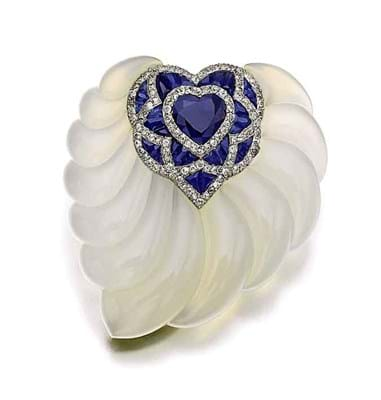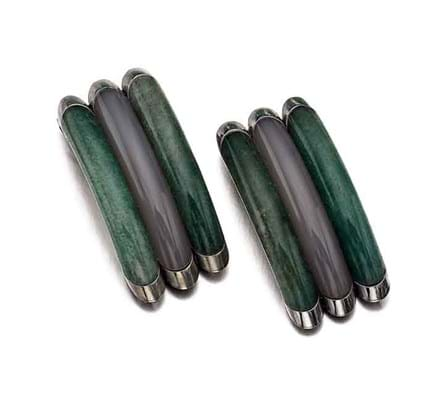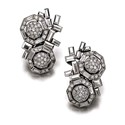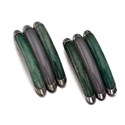Even when she and her partner Bernard Herz were arrested for operating a company under a Jewish name, she followed his wishes and re-registered the Maison Bernard Herz under her own name with borrowed capital of 700,000 francs. Bernard Herz did not survive the war but his son Jean returned from the front to resume a partnership that lasted until Madame Belperron's retirement in 1974.
Despite the difficulties she experienced in obtaining the materials for jewellery-making, Suzanne Belperron never stopped working during the war - something evident from the collection of wartime Belperron jewels offered for sale by Sotheby's Geneva on May 13.
The 19 pieces were owned by Mme Picha-Eisenstein, a close friend who recommended the designer to stars of stage and screen that she met through her husband, Boris Eisenstein, founder of the Société Parisienne de Sonorisation.
Sotheby's Geneva were among the first salerooms to put the greatest female jewellery designer of the 20th century back on the map with the sale of the Duchess of Windsor's jewels in 1987. But it says much about scholarship at the time that only five out of 16 Belperron pieces in the catalogue were actually identified as such.
More recently, the rooms sold Mme Belperron's personal 60-piece jewellery collection - discovered in a small apartment at the foot of Montmartre in 2007 along with the huge cache of drawings, casts, business correspondence, diaries and appointment orders that have done so much to restore her reputation.
Signature Style
Asked once why she signed so little of her work, Madame Belperron replied: "Mon style est ma signature."
Mme Picha-Eisenstein's jewels, some carrying maker's marks for Groëné & Darde who produced many Belperron designs, were assayed for either 1942 or 1943 when the Herz-Belperron boutique was in most peril.
Arrested on November 2, 1942 at her private office on the third floor of 59 Rue de Châteaudun following a letter of denunciation indicating that "the Belperron house dissimulates a Jewish business", on her way to the Gestapo headquarters in Avenue Foch Mme Belperron swallowed the pages of the company address book one by one.
She would later receive the Légion d'Honneur for her efforts on behalf of the Resistance.
Conscious that the wellbeing of the company lay on her shoulders, she continued to play with colour and a wide range of aesthetic influences to create remarkable and varied jewels.
These included pieces as diverse as Mme Picha-Eisenstein's diamond Mon Bracelet, a cuff bracelet composed of three tapered bands set with circular-cut diamonds (estimate SFr37,000-50,000) or her aventurine quartz and chalcedony Sport clips (estimate SFr2500-4000).
Both with assay marks for 1942, they were pursued to sums of SFr128,000 (£90,150) and SFr19,000 (£13,400) in a sale that saw all Belperron lots sold and many for multi-estimate sums. A selection is pictured here.
The current auction high for a Belperron jewel is the premium-inclusive €553,000 paid for an emerald, diamond and gold cornucopia brooch c.1950 at Christie's Paris in May 2010.
Exchange rate: £1 = SFr1.42











